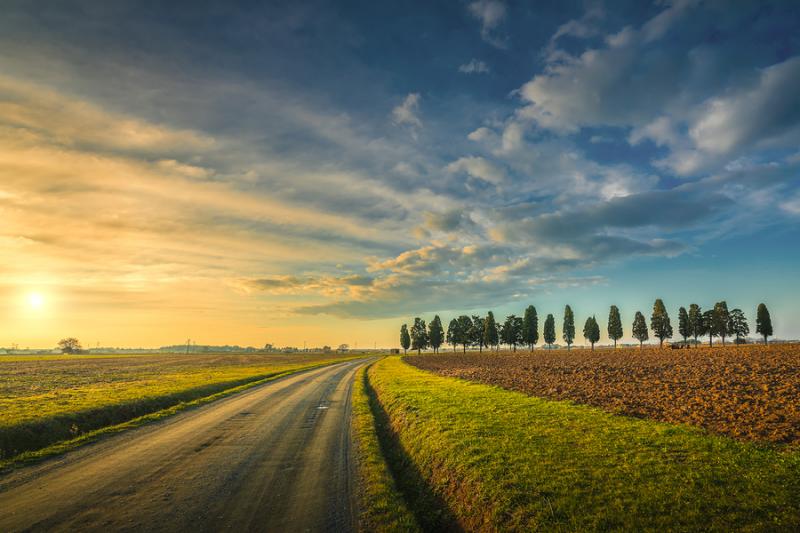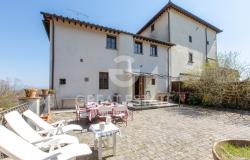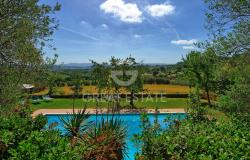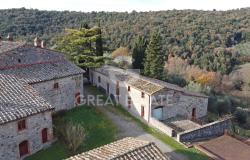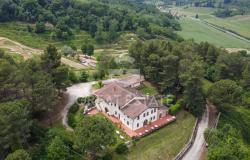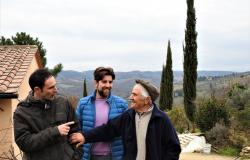Even if you’re not religious, Easter in Italy’s smallest towns is a chance to see century-old traditions that continue to bring together their communities like no other time of year.
On Santo Sabato (the Saturday before Easter), Gabriella Serafinelli, 63, lines a wicker basket with a clean white tea towel. A former baker, she has lived her entire life in Manciano, a small country town on the border of Tuscany and Lazio.
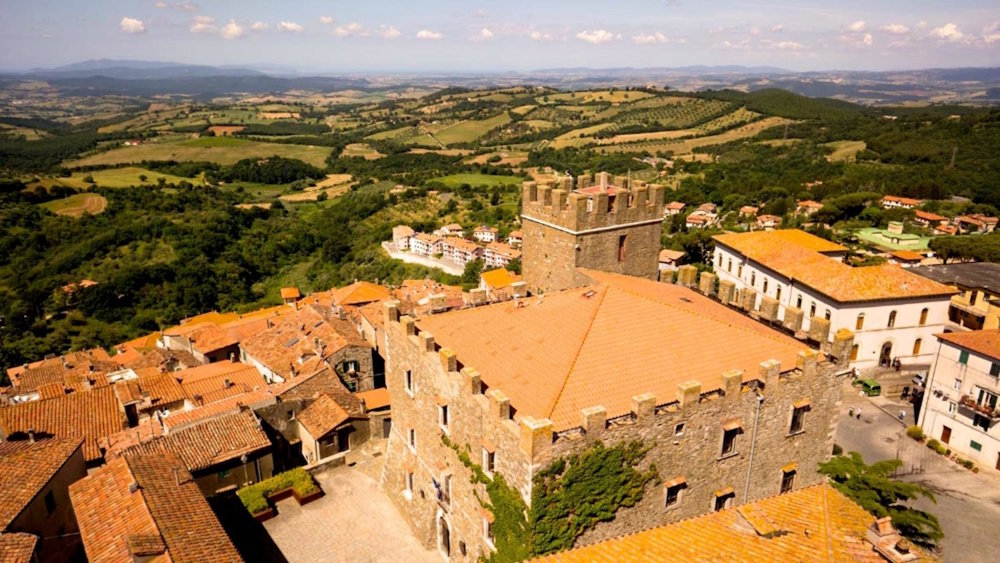
In the days she commandeered her family’s bakery, Gabriella and her husband, Fiorenzo, would make hundreds of ‘Colombe’, the airy Easter cake that is famous all over Italy.
In the legend told around here, this cake can be traced back to the Lombard king Alboino, who, during the siege of Pavia (mid-sixth century), offered a dove-shaped confection as a sign of peace.
A ‘Colomba’ is flavoured with dried fruit peel and plenty of sugar, but today, Gabriella prefers a much simpler and more humble cake, the Focaccia or ‘Caccia di Ricotta Salata.
“It’s just flour, yeast, ricotta, eggs and black pepper. It’s not as luxurious as a colomba, but the ricotta creates a soft crumb and the cakes can be eaten with sweet or savoury things,” she says.
Before the rise of domestic ovens, mothers and nonnas would arrive at Gabriella’s bakery with long black pan that they balanced on their heads with the help of a rolled dish towel. Inside were rows of focaccias waiting to be baked.
“There was always arguments. Women would try to blame us if their focaccias didn’t bake well because they didn’t prove them properly. Or sometimes they’d try to steal someone else’s focaccia!” Gabriella says.
These days the bakery is closed and the women bake their focaccias at home, but they still bring them wrapped in tea towels and carried in wicker baskets to the tiny Oratorio della Santissima Annunziata. There the parish priest, Don Fabio, will say a short mass before blessing each basket of Easter goods with a little holy water.
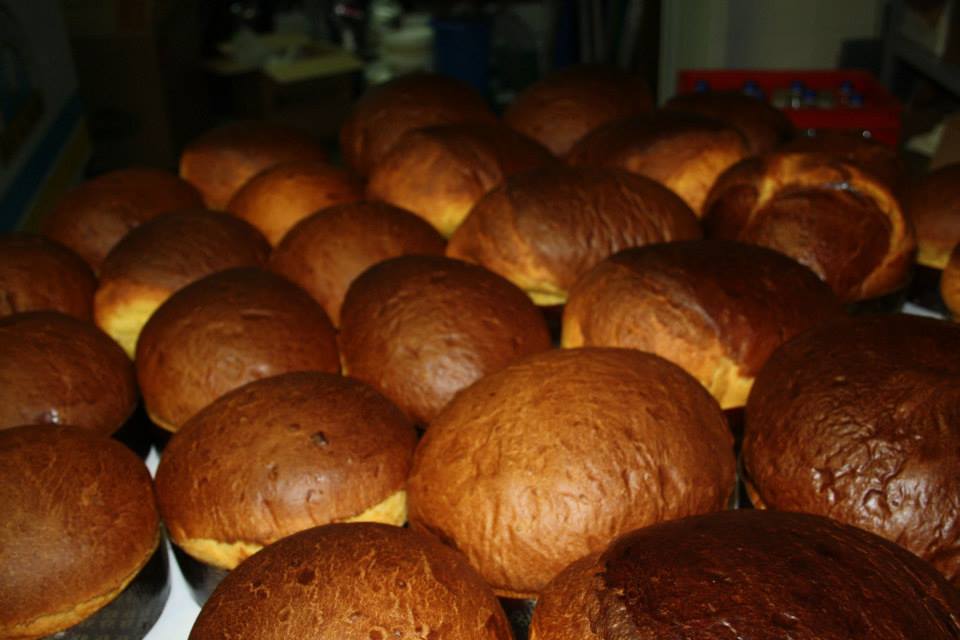
It’s not just focaccias at the church. There are plenty of brightly wrapped Easter eggs too. These are in the hands of Manciano’s oldest residents. The nonnas who reconcile their old world religious beliefs with the modern fixations of their grandchildren. Maria Santarelli, 84, is one of them.
Her two grandchildren won’t go to mass on Easter Sunday, but a least they’ll tuck into an Easter egg that’s been blessed.
The blessed eggs and focaccias will be at the centre of the family’s Easter Sunday breakfast. Maria will wake up at 5am to prepare all the various dishes.
“We have boiled eggs with mayonnaise, focaccia, capocollo (pork neck cured with salt and a little pepper), bread with pâté and fresh pecorino cheese,” she says.
“If you’re lucky, you’ll also get a glass or two of prosecco.”
The tradition of the Easter breakfast is an extremely old one. You’ll find it throughout central Italy with little local differences popping up at each family table
Maria is one of the rare few who remembers the religious significance behind the abundant breakfast.
“It was a ‘premio’ (a prize) for making it through Lent,” she says.
“The family wakes up early to share, all together, on the first morning after Lent, this great triumphal day with all the food we couldn’t eat while we were fasting.
“But we didn’t have prosecco. We only drank our own homemade wine!”
The Easter breakfast is slowly being replaced by chocolate eggs and roast lamb lunches even in the smallest corners of Tuscany like Manciano, but there is still one Easter tradition that even the youngest locals refuse to renounce, the Easter Monday picnic.
This one is universally Italian. An exodus from the cities into the countryside for a picnic or barbecue with friends by a river or lake. Emphasis on the friends.
“Everyone knows you spend Easter Sunday with your family and Easter Monday with your friends,” says Federico Bardelli, 25.
The Italians even have a saying for it, “Natale con i tuoi, Pasqua con chi vuoi” (Christmas with your family. Easter with whomever you want).
This Easter Monday, Federico is planning his annual barbecue with plenty of sausages, pork belly and battered and fried artichokes, a local favourite, as well as a few games of ruzzola.
Ruzzola is another bygone Easter tradition in these parts. It’s like mini golf, but instead of a ball you have a heavy wooden disk, which you roll along a predesignated path full of twists and turns. The person who gets their disk the farthest down the path in the least number or rolls wins.
Or at least, that is how Federico and his friends play it.
“Everyone has their own rules for ruzzola. Ours are our grandfathers’ and we try to make it more difficult each year. Rolling a disk sounds easy, but it’s not!”
Easter festivals in Southern Tuscany
Good Friday – Every town will have a Good Friday procession. It’s led by the parish priest and is a somber walk through the town with candles and, sometimes, a statue or two, making for a very evocative sight. Processions usually start at 6pm.
For one of the region’s oldest processions, head to Chianciano Terme to see 150 people in costume recreating the Passion of the Christ from 9:30pm.
Easter weekend
Sagra dell'Agnello, San Martino sul Fiora
20-22 April
An annual food festival for all those who want to taste the traditional Easter fried and roast lamb, but don’t have a Tuscan nonna to make it for them!
Easter Sunday, Porto Santo Stefano
Get up early to see another religious procession as it moves through the town's streets, bringing the statue of the risen Christ to the port for the rite of the blessing of the sea. The moored fishing boats respond to the blessing by playing their sirens. The celebration starts at dawn.
Easter Sunday, Rufina
If you can’t make it to Florence to see the famous, Scoppio del carro, you can see a smaller version of the event in the main square of Rufina as the locals celebrate the day by letting off a whole host of fireworks from the top of an ancient cart.
